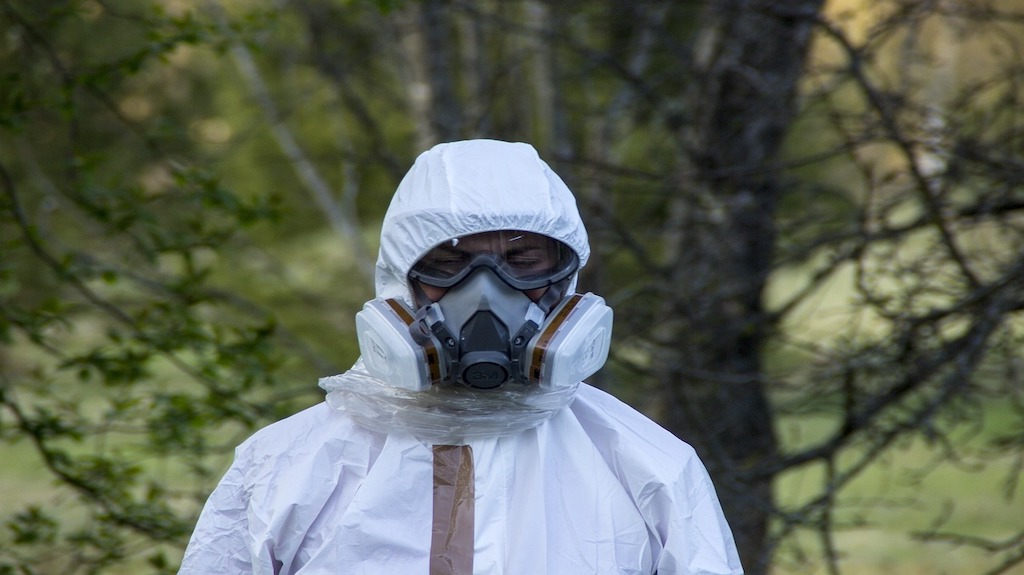Hazardous materials are present in a wider range of workplaces than you might think. If your job requires you to work in and around hazmat, it’s crucial to receive the proper training to avoid dangerous situations such as a hazardous spill.
This article will talk about different types of hazardous materials, how to react to a hazardous spill as well as the right training needed to correctly handle these materials.
Click the link in each section if you’d like to jump ahead.
Part 1: Working with Hazardous Materials – A Guide for Employees and Employers
Part 2: The Aftermath Of A Hazardous Spill – How to React Safely
Part 3: Investing in Safety – Training for a Prepared Workforce

Looking for training? With over 200 years of combined experience, our staff offers more than theoretical or abstract ideas. ACUTE provides a wide range of training courses including hazardous spill response training, work at heights, 40-hour Hazwoper and confined space entry to name just a few. For a full list of our courses click here.

Part 1: Working with Hazardous Materials – A Guide for Employees and Employers
What are Hazardous Materials?
In the workplace, you might encounter materials that pose a health or safety risk. These are called hazardous materials (hazmat) and can come in various forms, from liquids and solids to gases and even biological agents. Exposure to hazmat can cause a range of health problems, including skin irritation, respiratory issues, and even cancer.
Identifying Hazardous Materials: The WHMIS Icons
The Workplace Hazardous Materials Information System (WHMIS) is a crucial tool for recognizing and understanding hazmat. WHMIS uses a standardized labelling system with specific symbols to communicate the dangers associated with a material. Here’s a quick rundown of some common WHMIS icons:
- Flame: Flammable materials can easily ignite and cause fires.
- Skull and Crossbones: This symbol signifies toxic materials that can be fatal if ingested, inhaled, or absorbed through the skin.
- Exclamation Mark: This indicates an irritant, a material that can cause skin, eye, or respiratory tract irritation.
- Biohazard Symbol: This warns of biological hazards, materials that contain infectious agents or harmful microorganisms.
Who Should Receive Hazardous Spill Training?
Some workplaces where hazardous spill response training might be necessary include:
- Industrial Facilities
- Laboratories
- Hospitals And Healthcare Facilities
- Waste Treatment And Disposal Facilities
- Oil And Gas Industry
- Agricultural Settings
Keep in mind that this is not a comprehensive list – you should always check with your employer if you require hazardous spill training.

Knowing what the different WHMIS icons represent can help avoid hazardous spills.
Part 2: The Aftermath Of A Hazardous Spill – How to React Safely
What To Do If There’s A Hazardous Spill
Hazardous material spills can occur in various workplaces, and knowing how to react is crucial for the safety of everyone involved. Here are some common types of spills and recommended responses:
- Chemical Spills: These can include acids, bases, solvents, or other hazardous liquids.
Action: If safe to do so and you’ve received proper training, put on appropriate personal protective equipment (PPE) like gloves, goggles, and respirators (depending on the material). Contain the spill using spill kits typically available in workplaces. Do not touch the spill unless you are absolutely certain of the material and have the necessary training and equipment.
- Mercury Spills: Mercury is a highly toxic metal that can vaporize at room temperature.
Action: Do not attempt to clean up a mercury spill yourself. Mercury requires specialized equipment and training for safe handling. Immediately evacuate the area and contact your supervisor or a hazardous materials response team like ACUTE Environmental Services.
- Biological Spills: These involve blood, bodily fluids, or other materials potentially containing infectious agents.
Action: Similar to mercury spills, do not touch a biological spill unless you have been properly trained in biohazard cleanup procedures. Contain the spill if possible and contact your supervisor or a qualified biohazard remediation company like ACUTE.

If you encounter a hazardous spill, always err on the side of caution!
When in Doubt, Always Err on the Side of Caution
If you are unsure about the type of hazardous material involved in a spill, or if you feel uncomfortable handling it yourself, there’s a simple rule to follow: DON’T TOUCH IT!
- Contact your supervisor immediately: They will be able to assess the situation and take appropriate action, which might involve calling in a professional hazmat cleanup team.
- Consider professional help from ACUTE: ACUTE’s trained and certified technicians have the expertise and equipment to safely handle any hazardous material spill, minimizing risks and ensuring proper disposal.
Remember, your safety and the safety of your colleagues are paramount. When dealing with hazardous materials, prioritize caution and seek help when necessary.
Part 3: Investing in Safety – Training for a Prepared Workforce
HAZWOPER Training
Now that we’ve covered identifying hazardous materials and responding to a hazardous spill, let’s emphasize the crucial role of proper training. Equipping both employees and supervisors with the necessary knowledge and skills is paramount for preventing accidents and ensuring a safe work environment.
Worker Training:
All workers who may encounter hazardous materials in their jobs should receive HAZWOPER Training. This training covers:
- Recognizing WHMIS symbols and hazard classifications.
- Understanding the health and safety risks associated with different hazmat categories.
- Proper handling, storage, and disposal procedures for hazardous materials.
- Safe work practices to minimize exposure risks.
- Emergency response procedures for spills and other incidents.
Supervisor Training:
Supervisors play a critical role in overseeing workplace safety. In addition to HAZWOPER Training, supervisors should receive additional training on:
- Implementing and enforcing safe work practices for hazardous materials.
- Selecting and maintaining appropriate PPE for various situations.
- Recognizing signs and symptoms of potential hazmat exposure.
- Effectively responding to hazardous material incidents, including evacuation procedures and contacting emergency response teams.
The Cost of Negligence
Failing to provide proper training and failing to comply with WHMIS regulations can have serious consequences. These include:
- Worker injuries and illnesses from hazmat exposure.
- Workplace fatalities in worst-case scenarios.
- Significant fines and penalties for the organization.

ACUTE offers a state of the art facility with highly trained staff.
Investing in ACUTE’s Training Solutions
ACUTE offers a comprehensive suite of training courses designed for both workers and supervisors. Our courses are developed by certified instructors and comply with all current regulations.
This training program covers the requirements of the OSHA HAZWOPER standard (29CFR 1910.120). This standard sets out the minimum training requirements for site workers on hazardous waste sites, environmental remediation and emergency projects in the United States of America. The quality and comprehensive nature of this standard make it applicable and attractive to those employers and workers who work at Canadian workplaces that contain environmental contamination or hazardous material
Every year after the initial 40-hour HAZWOPER training requirement has been met, workers who wish to maintain a current certification under the HAZWOPER standard must be updated. This training program meets the requirements outlined in OSHA 29 CFR 1910.120 for 8 (eight) hours of annual refresher training. The training program is composed of topics and can be customized to focus on topics that pertain to workplace hazards for workers associated with hazardous waste/materials operations.
This training program will cover the legislative requirements and measures for spill reporting and cleanup. Participants will be taught practical strategies to both prevent and safely contain spills that occur in the workplace. Training programs are routinely customized to reflect client sites and products.
Program content has been designed to provide workers, supervisors and employers with relevant information provided under WHMIS 2015 (GHS) about the safe handling, use and storage of hazardous materials in the workplace. Specific workplace examples are used wherever possible to enhance the relevance of the course for participants.
Remember, a well-trained workforce is a safe workforce. Take the proactive steps today to prioritize safety in your workplace

